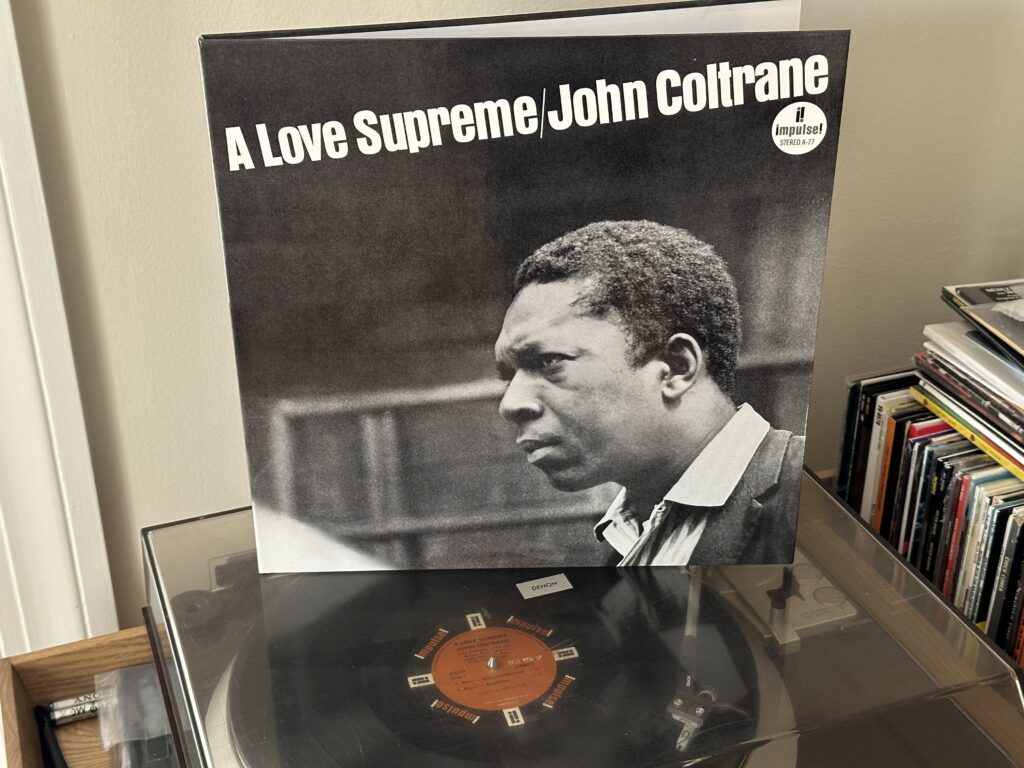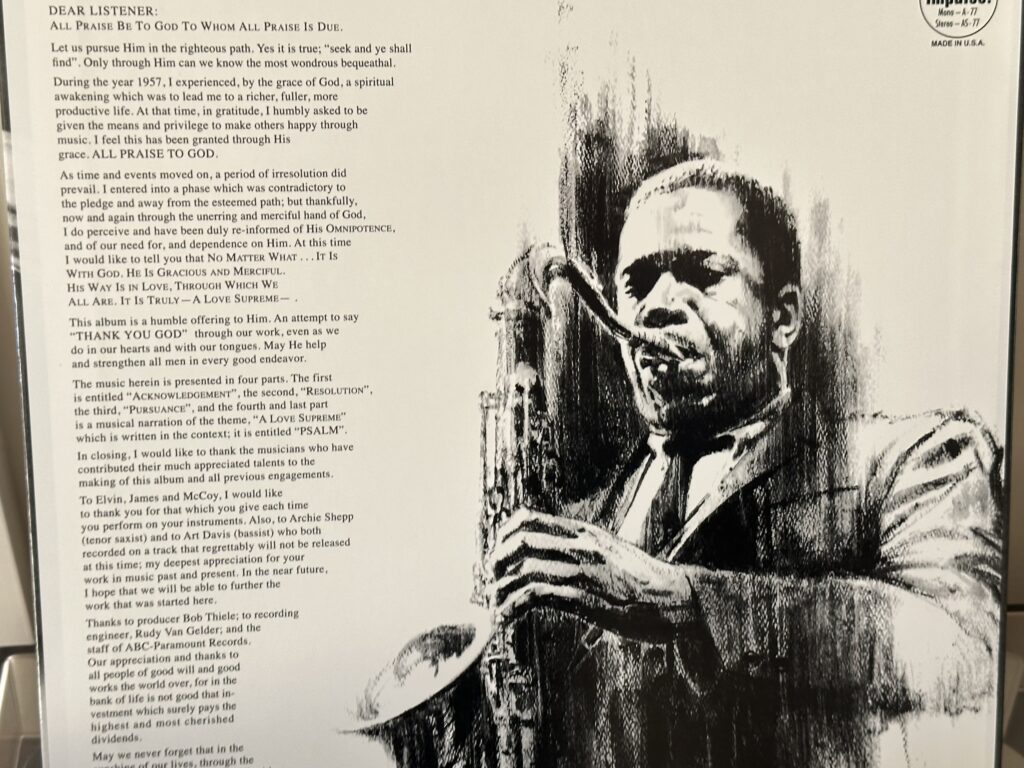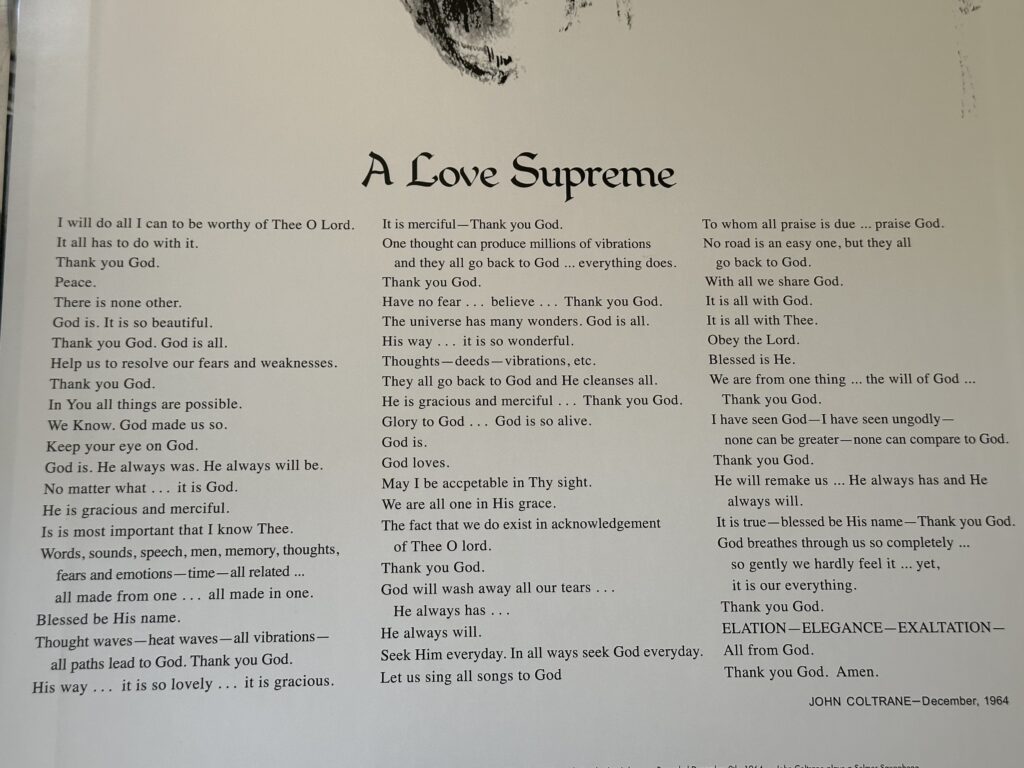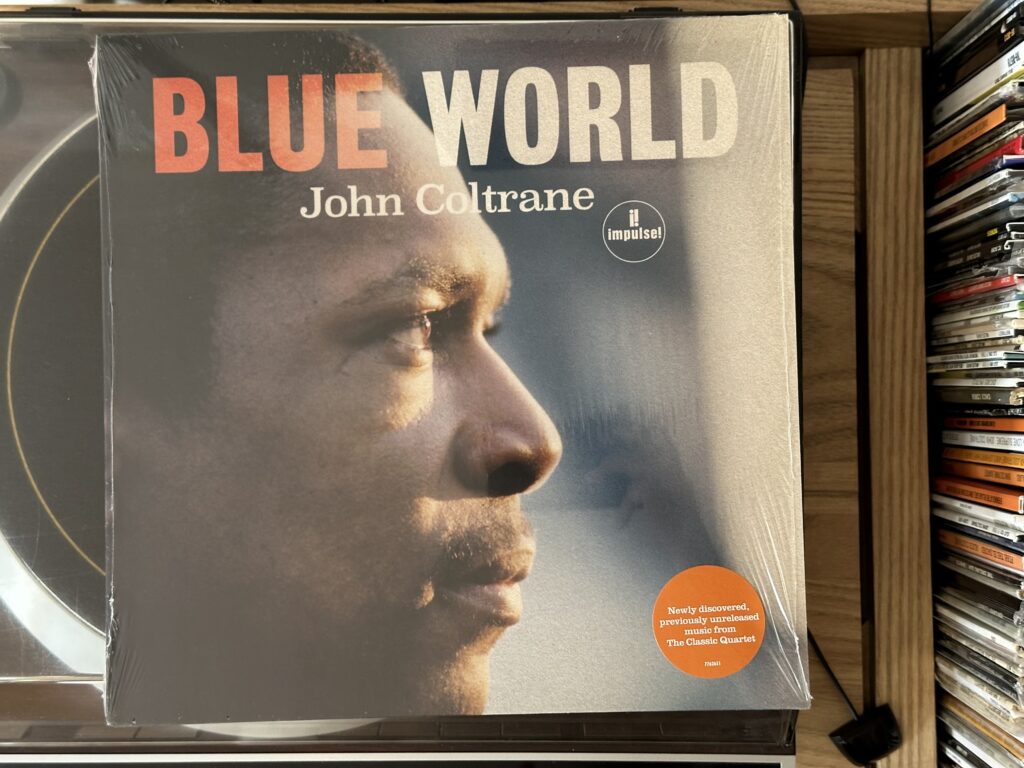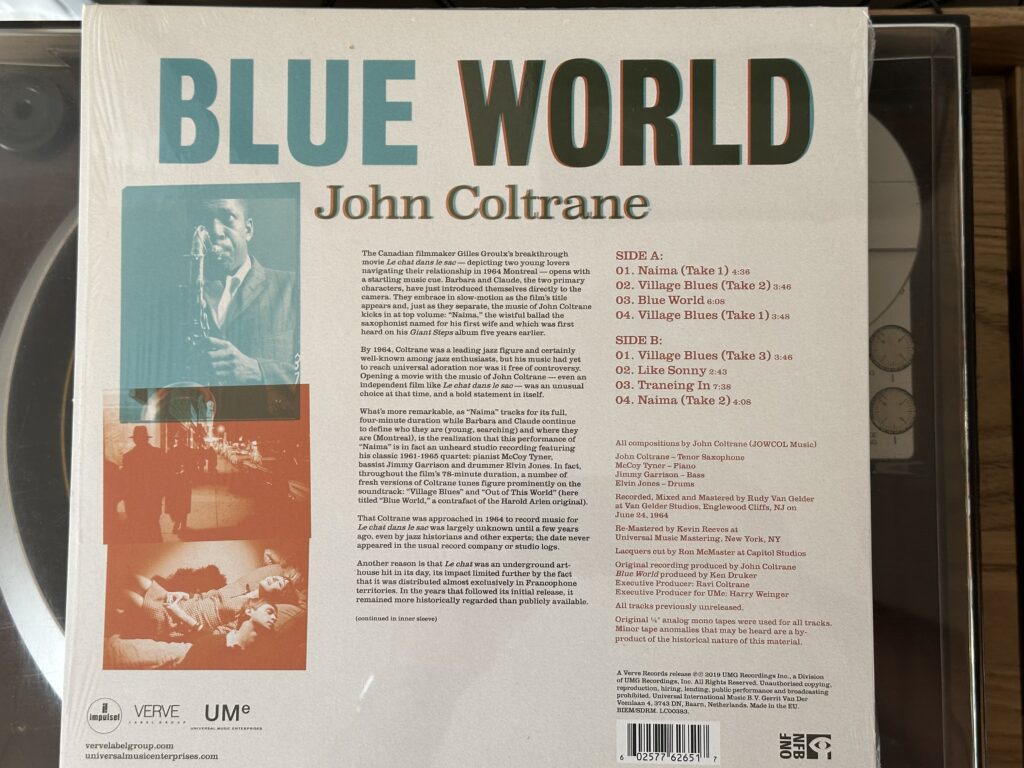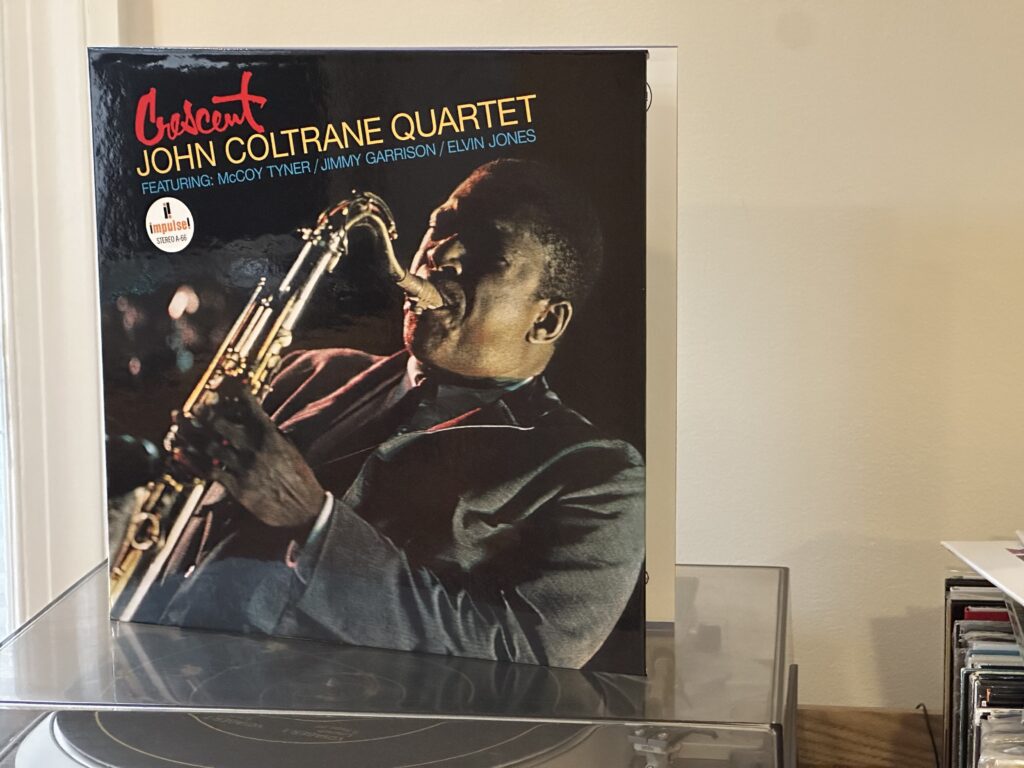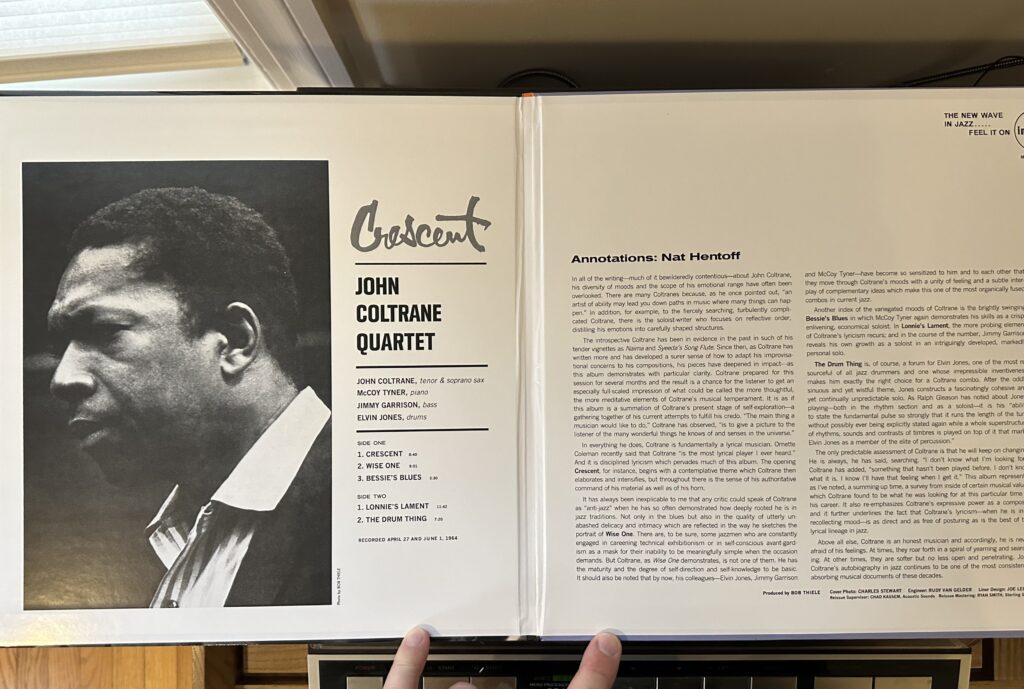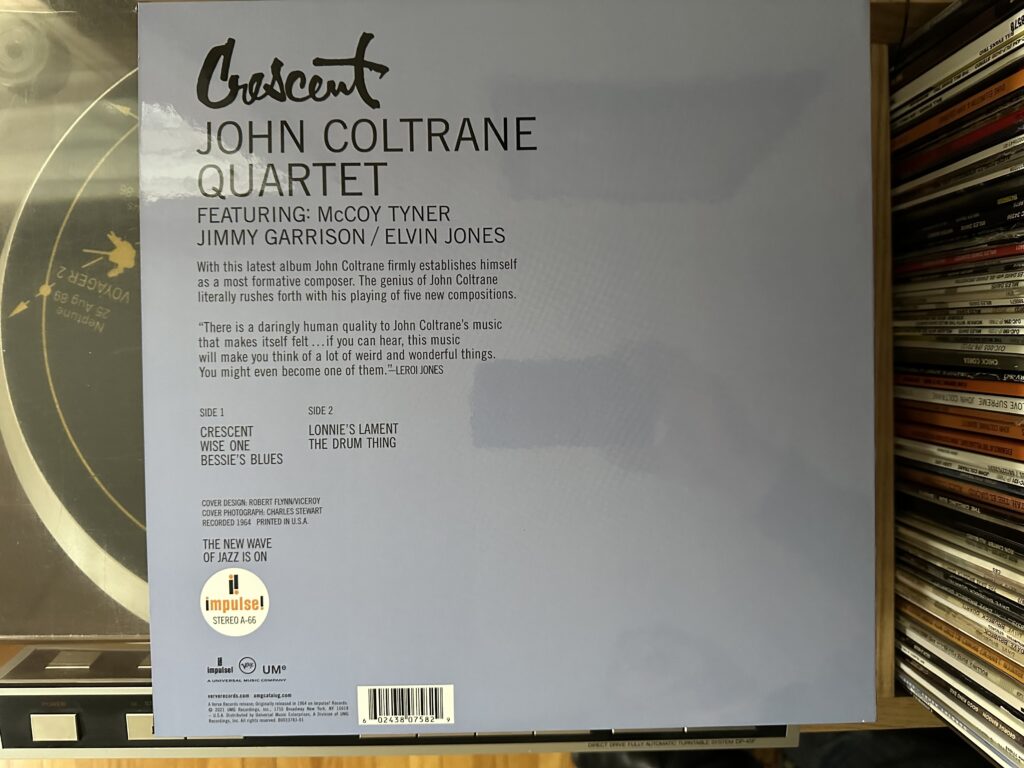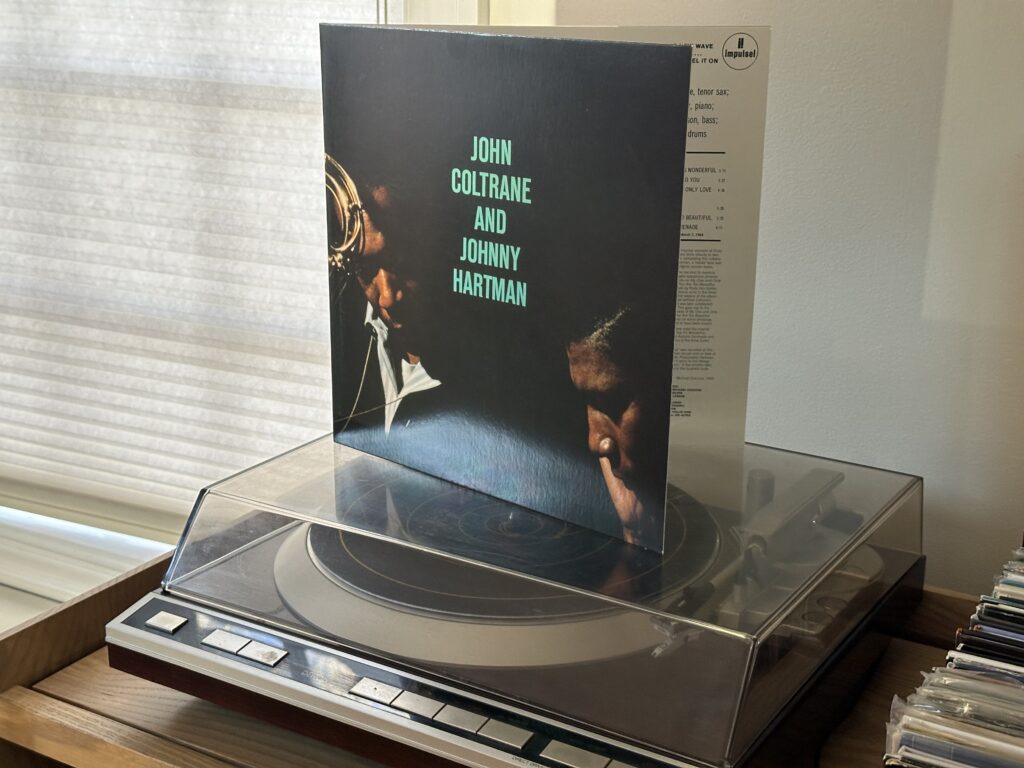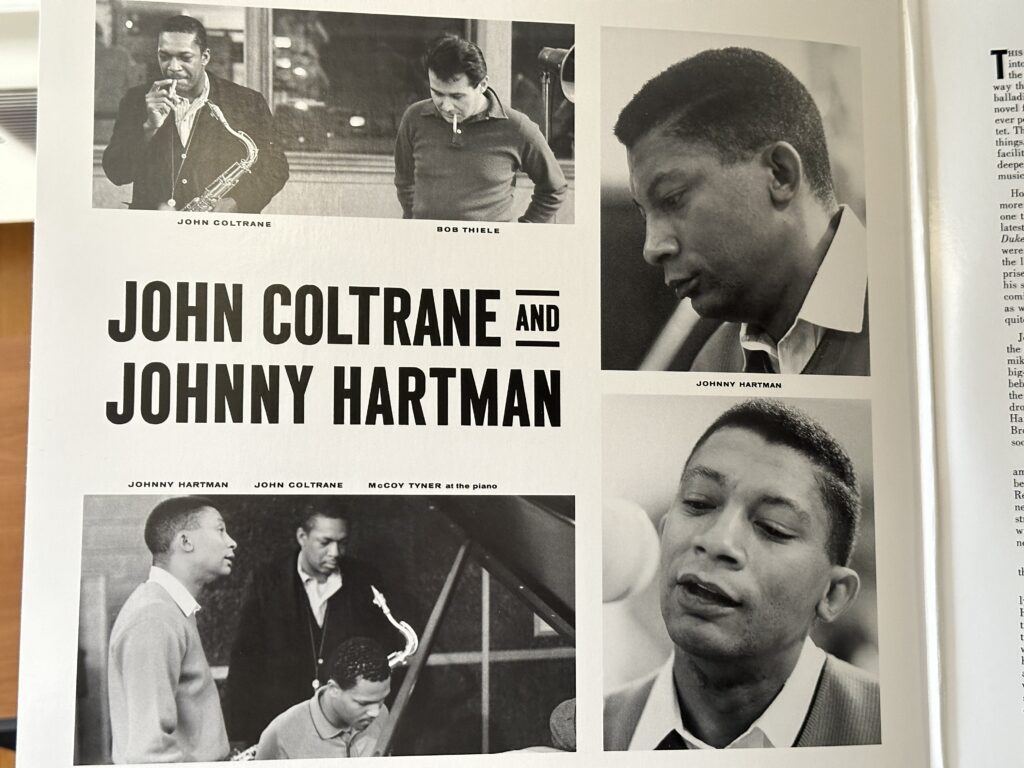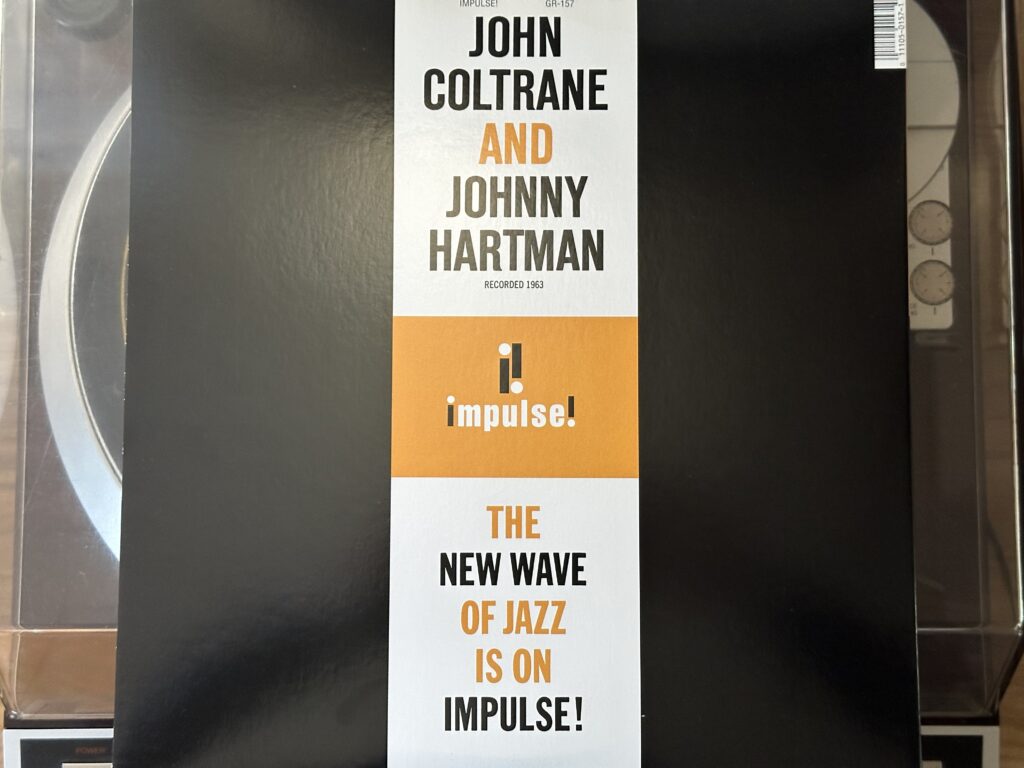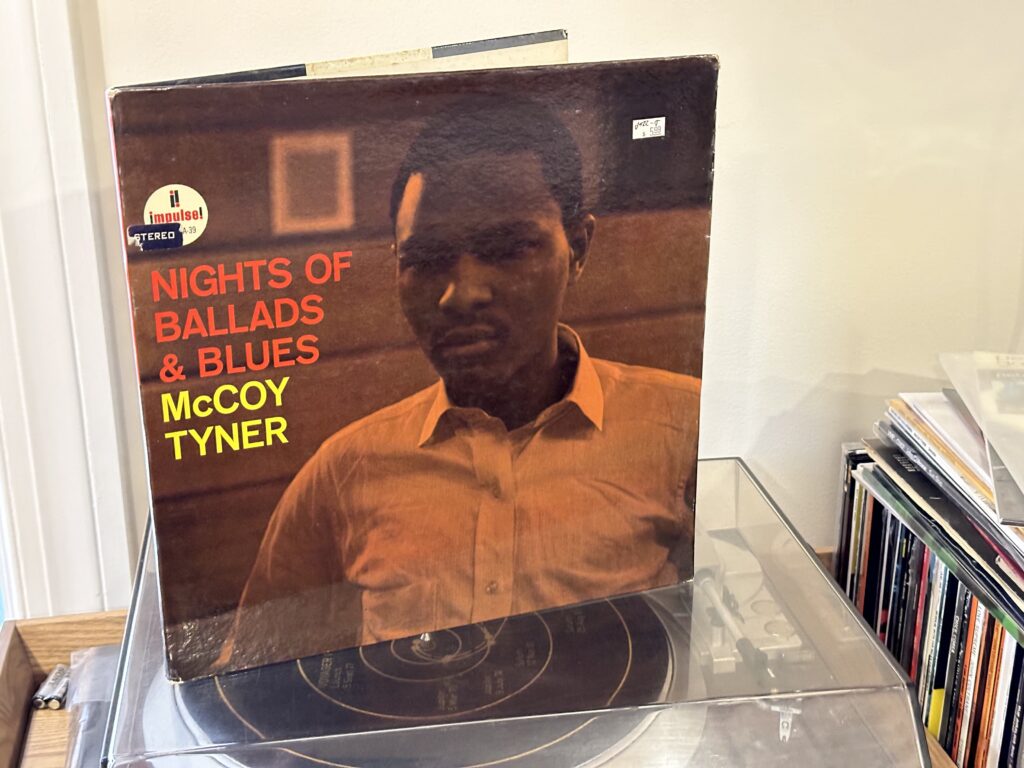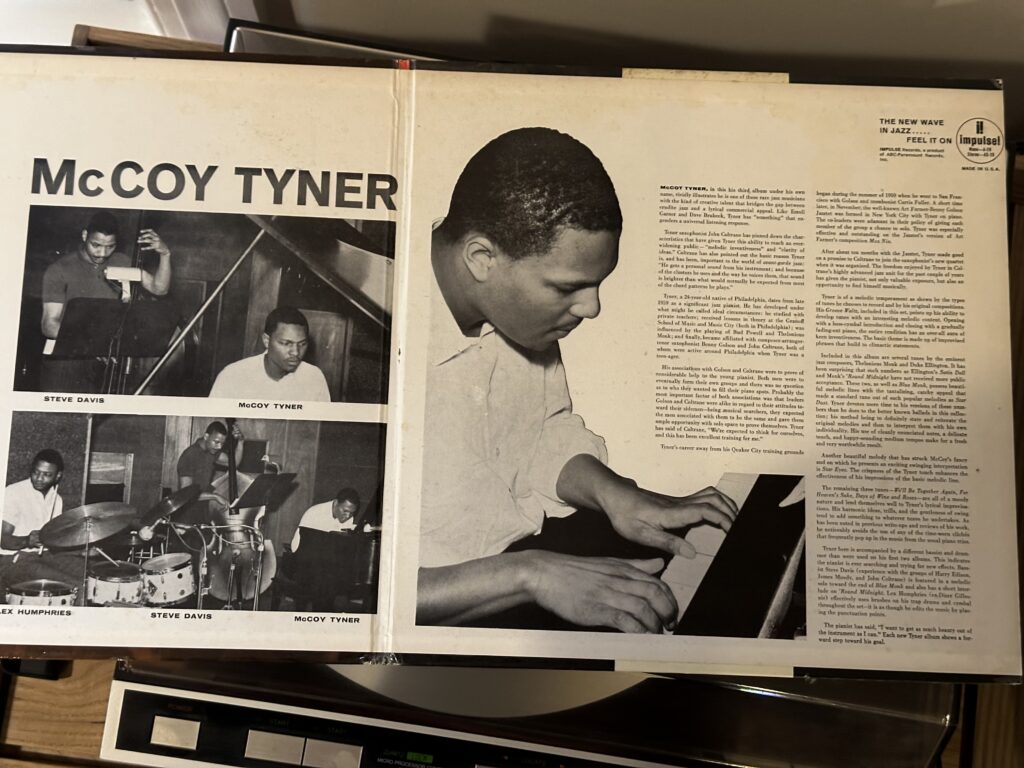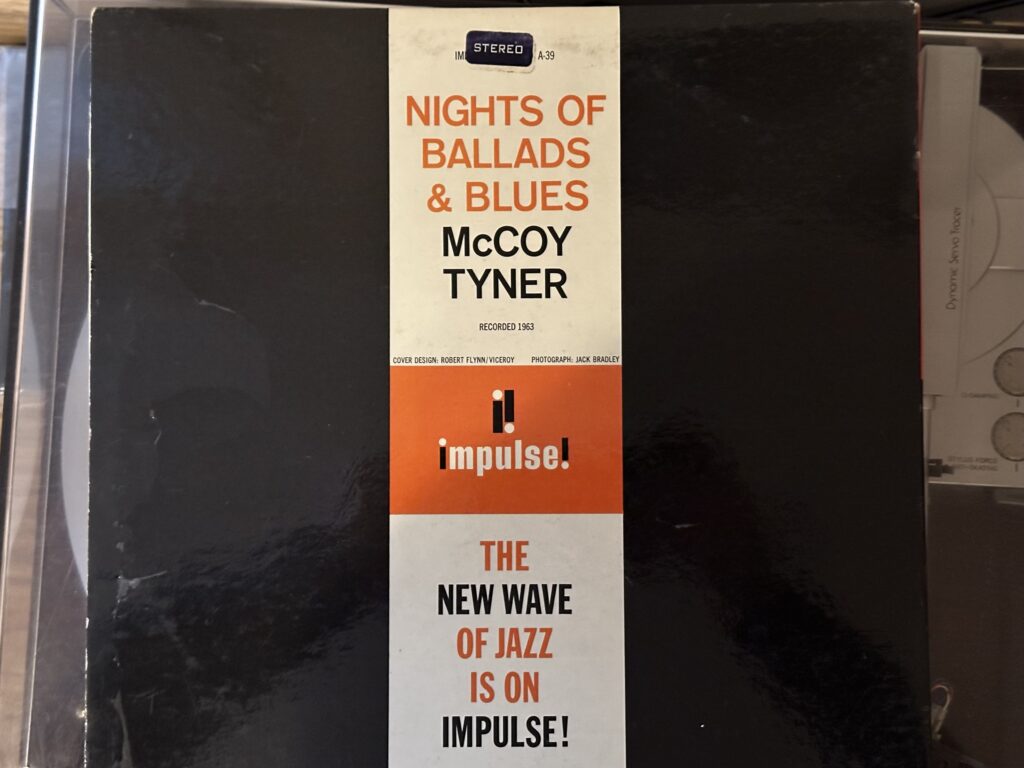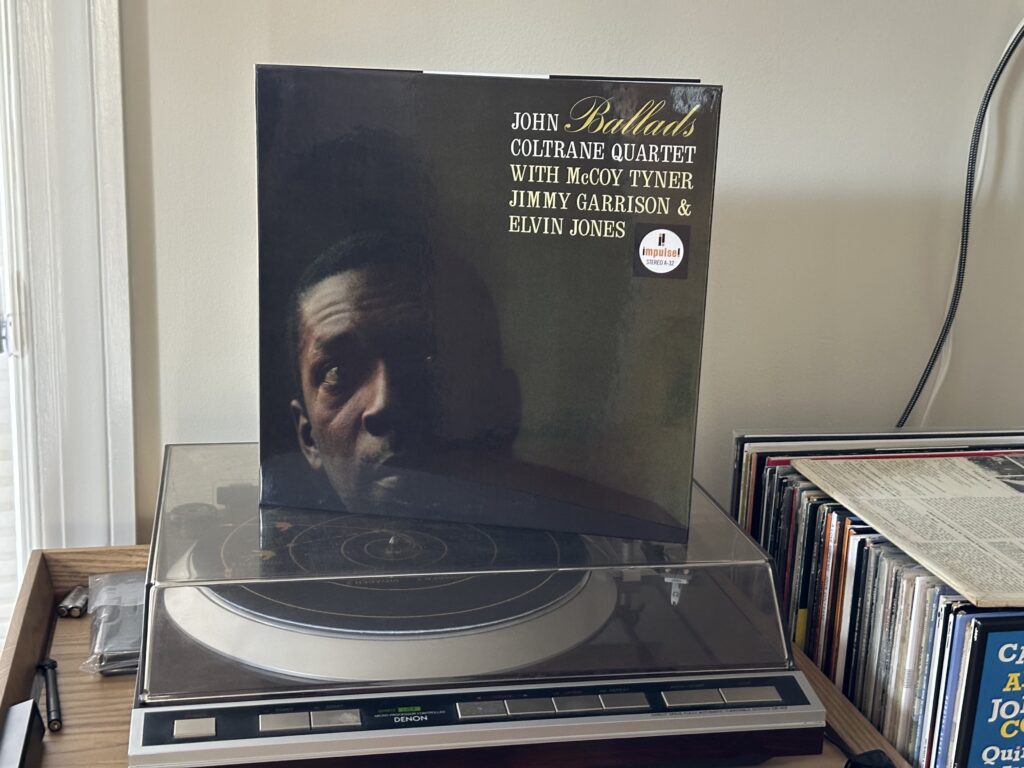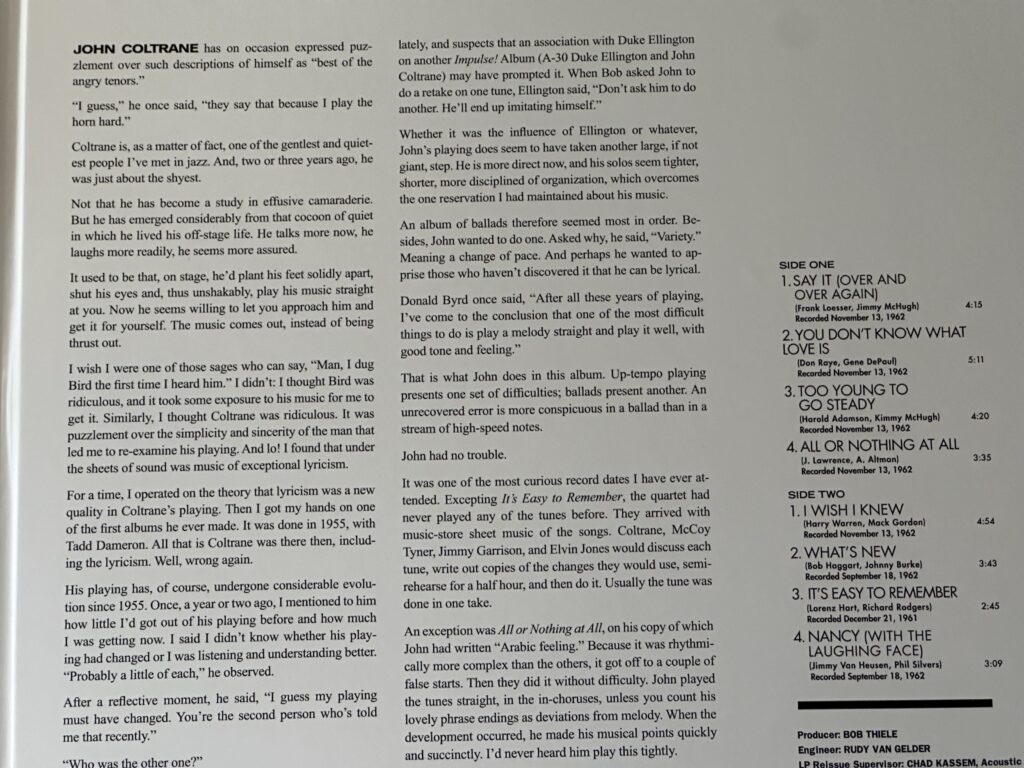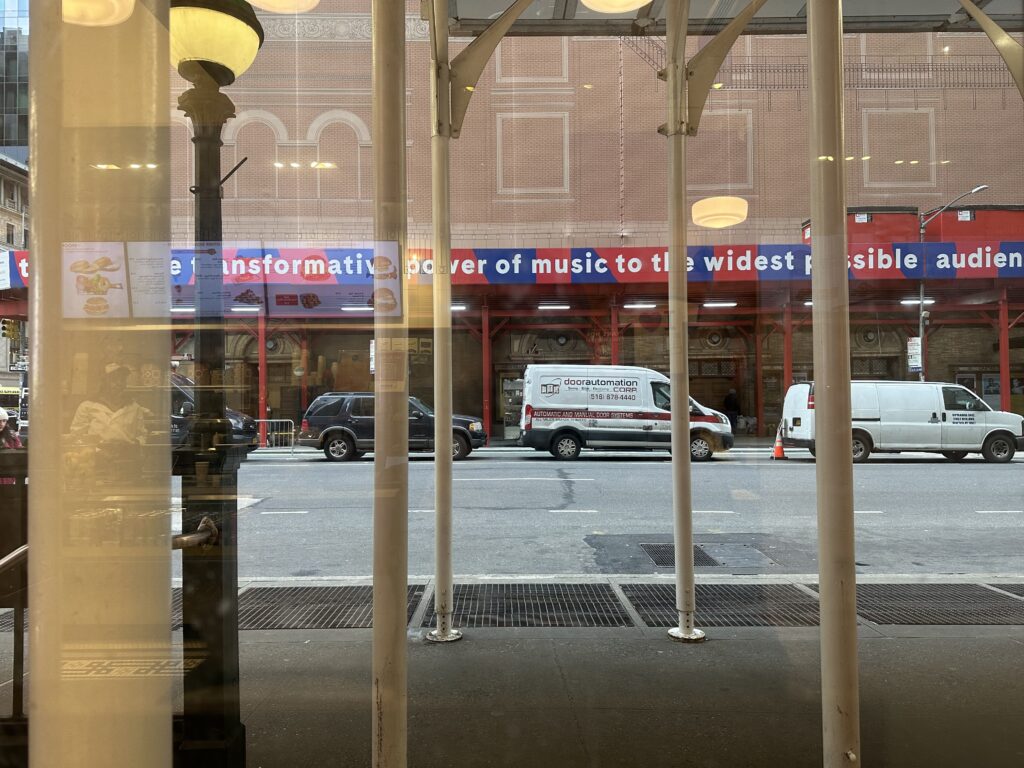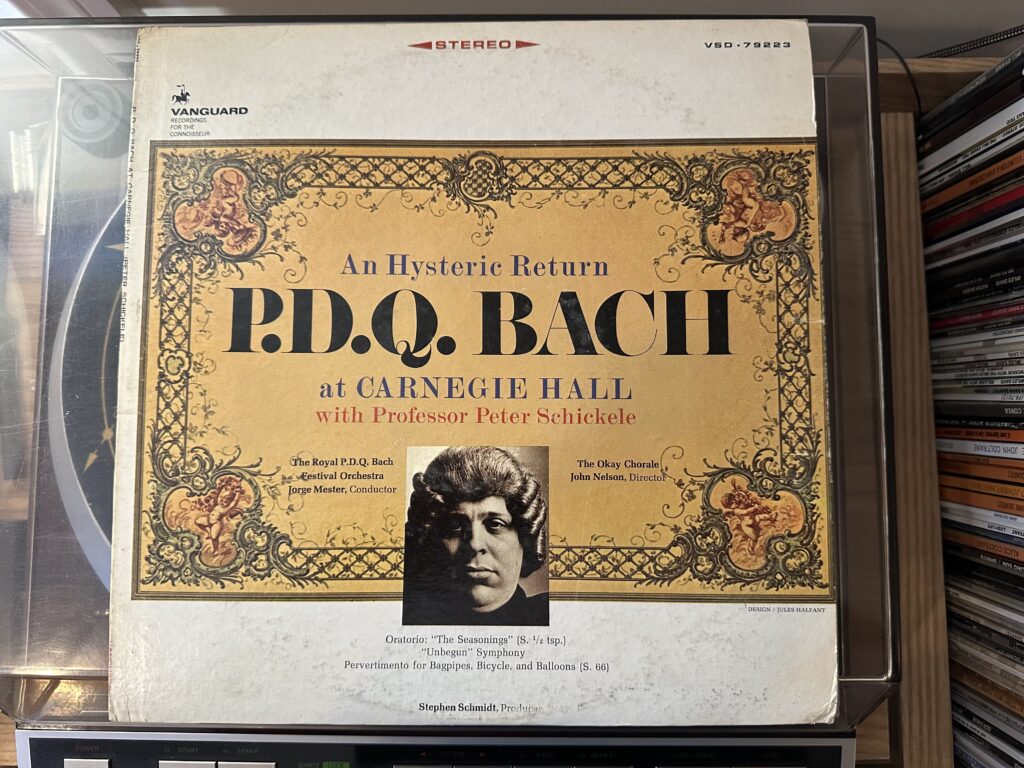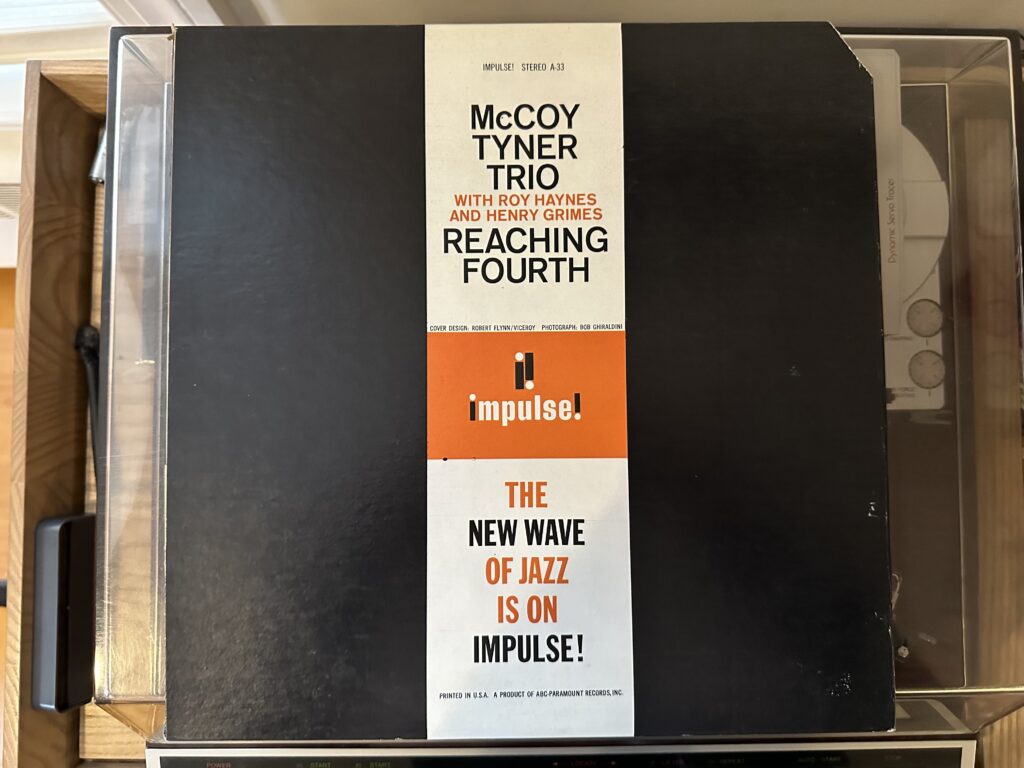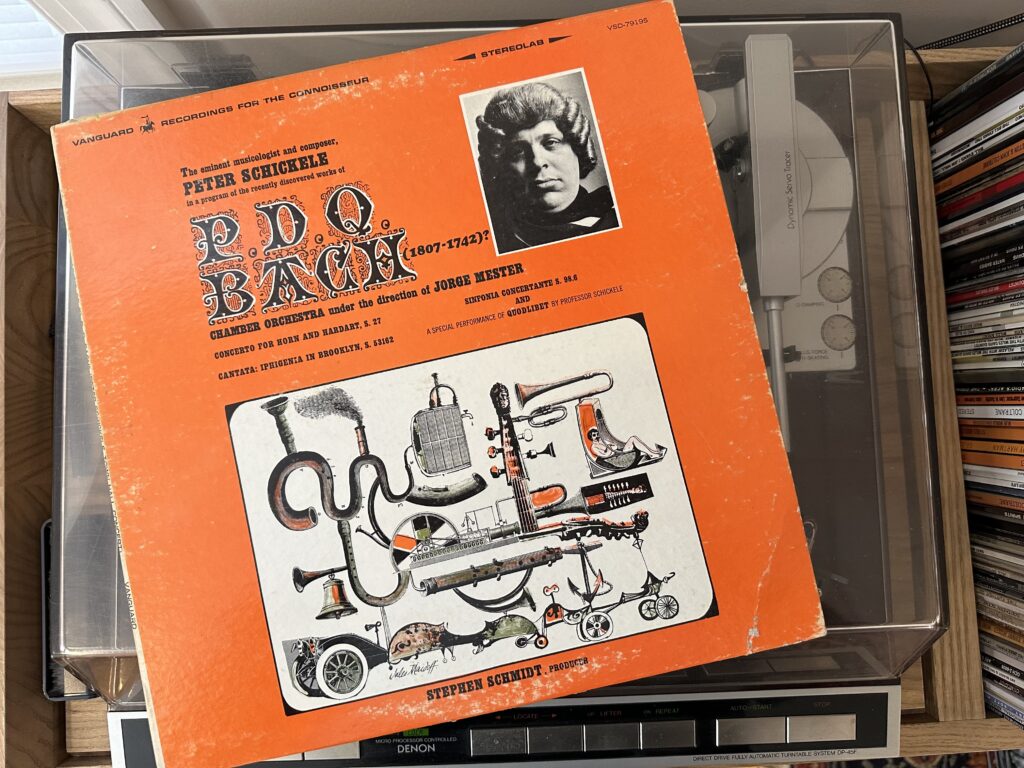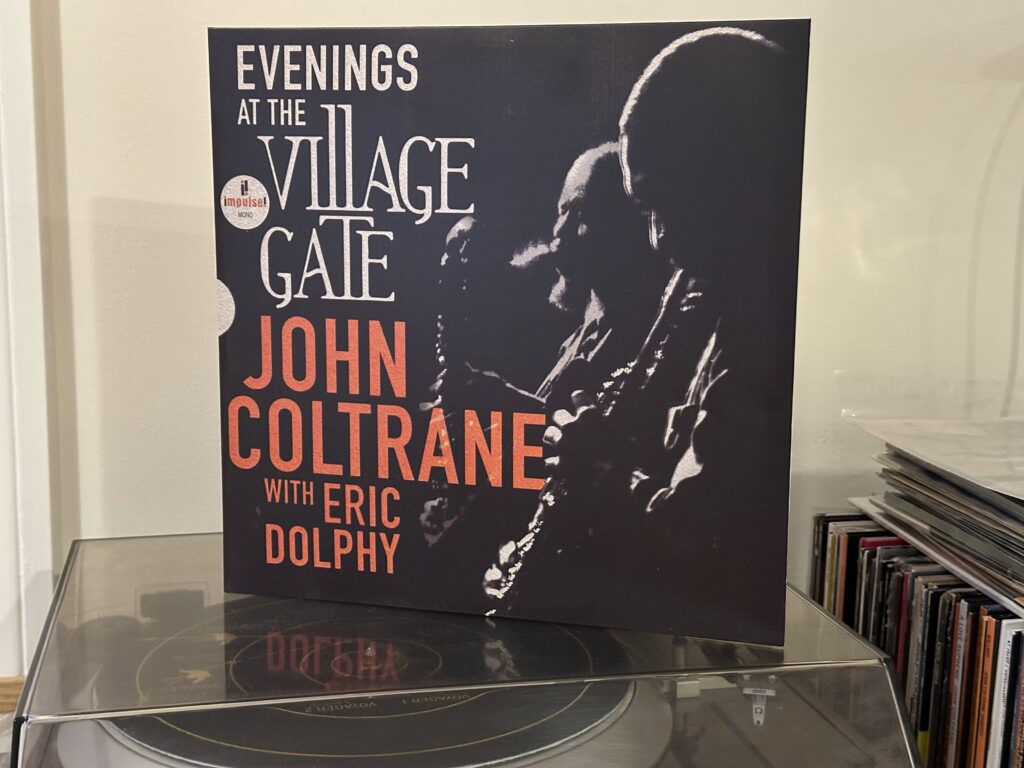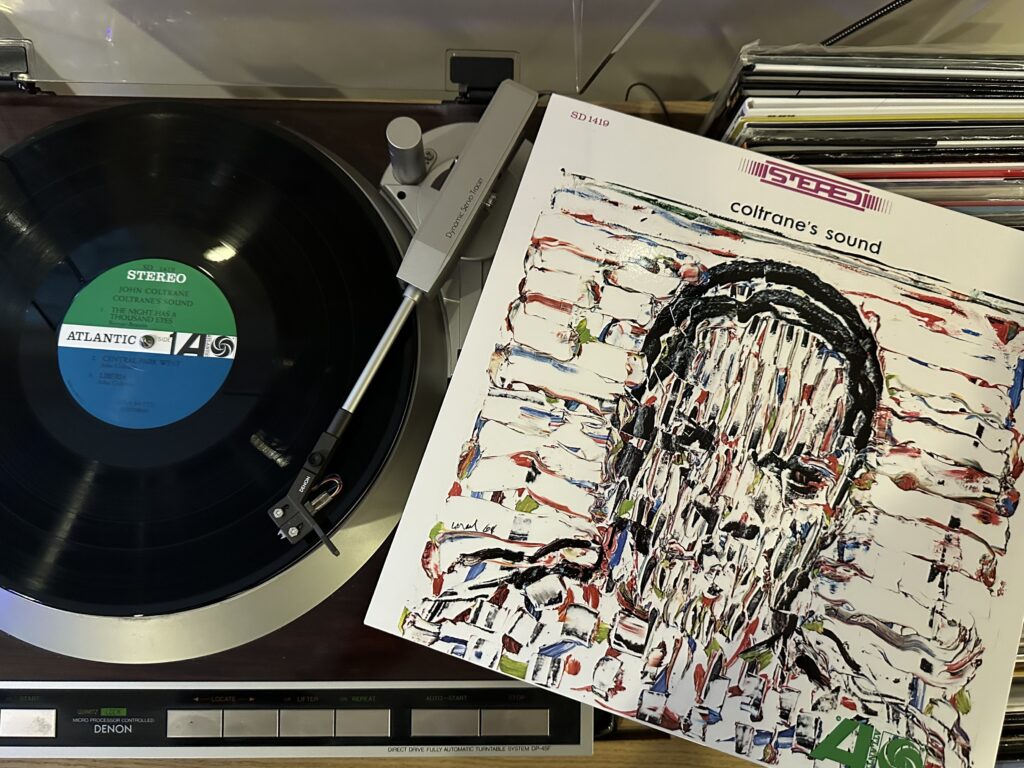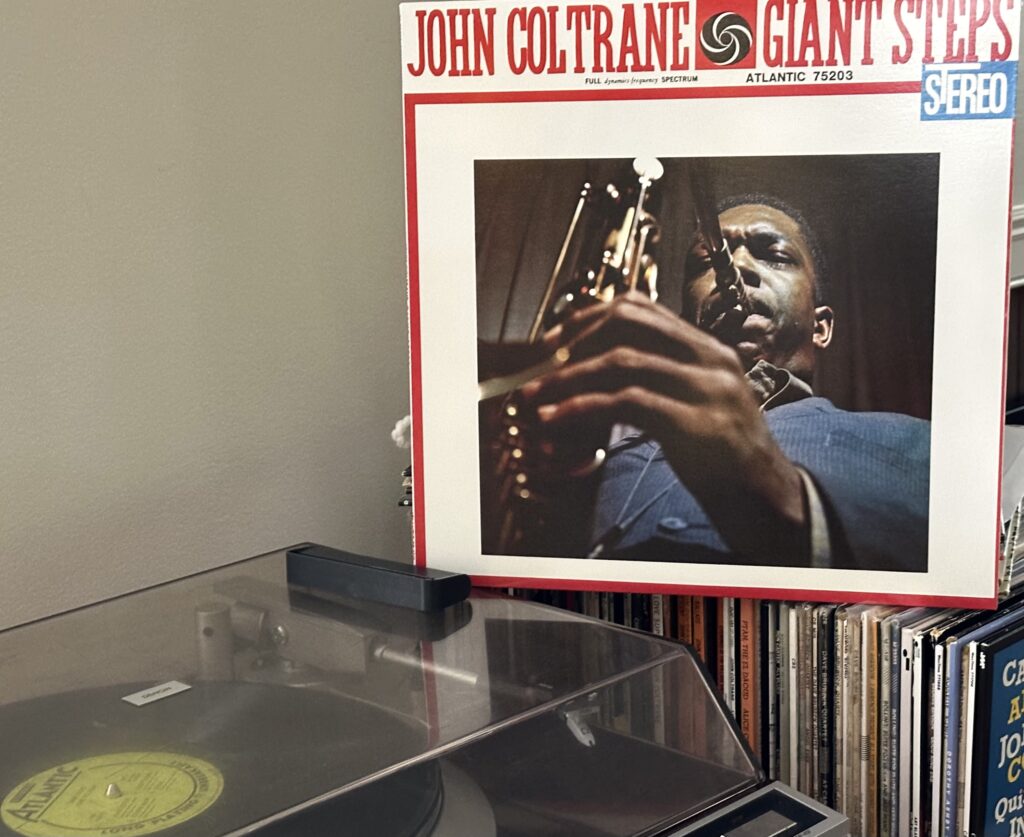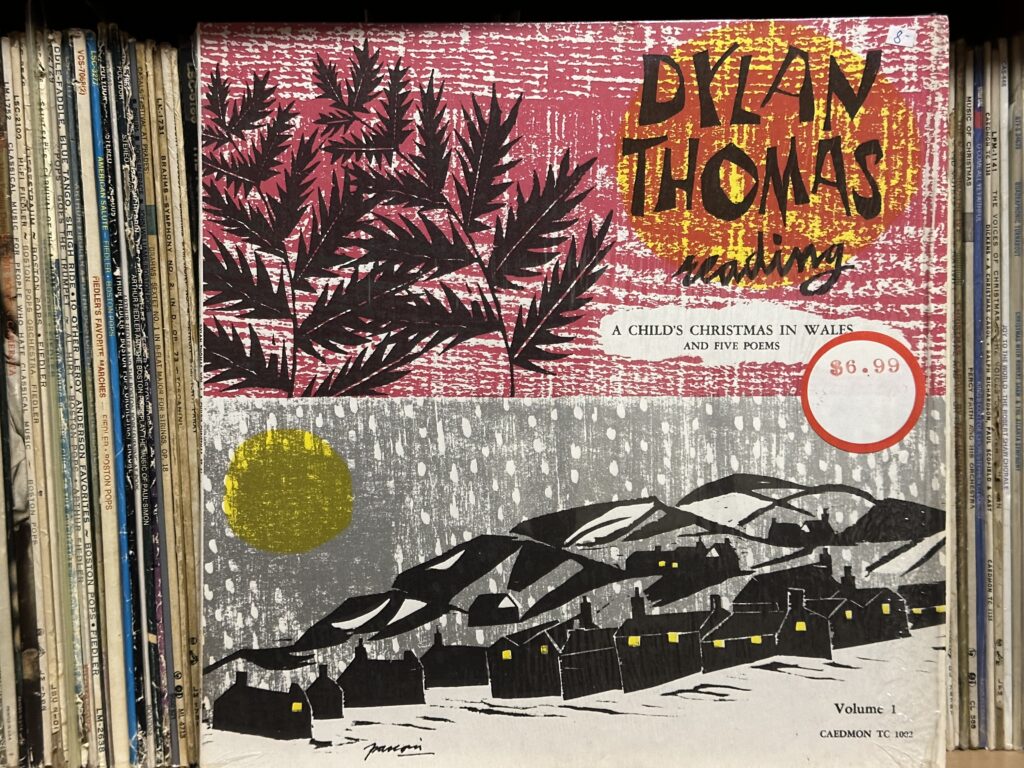
Album of the Week, March 16, 2024
Following the January 1965 release of A Love Supreme, John Coltrane took it on the road with the musicians of the Quartet, playing a legendary handful of shows that presented the material, still unfamiliar to many audiences, with a newly expanded band. For years it was thought that a performance at the Antibes Jazz Festival on July 26, 1965 was the only surviving recording of these shows. However, in 2021 a new recording, of a performance at the Penthouse Club in Seattle, was unearthed, and it was astonishing — not only did it document Trane performing the entire suite plus additional interludes, it also featured an expanded band that added Donald Rafael Garrett playing a second upright bass alongside Jimmy Garrison; Carlos Ward, playing alto saxophone in what would be his only performance with Trane; and most importantly the tenor saxophonist Pharoah Sanders, in a rare early appearance with the band.
Sanders, born Ferrell Lee Sanders in Little Rock, Arkansas on October 13, 1940, was still relatively unknown when he began playing with Trane, but he was far from inexperienced. Having moved to New York City in 1962 and with no fixed residence, the great Sun Ra gave him a place to live and encouraged him to use the name “Pharoah.” He performed with Billy Higgins and Don Cherry, coming to the attention of Eric Dolphy and John Coltrane. By June 1965 he was recording with Trane, first on his great free jazz work Ascension alongside the Classic Quartet and other guest players like Archie Shepp, Marion Brown, and Freddie Hubbard; then in October 1965 on this recording. He would go on to record more dates with Trane, including the milestone session Meditations and Om.
Garrett (born 1932 in El Dorado, Arkansas) had met Coltrane in 1955 while Trane was touring with Miles, and played with Ira Sullivan, Rahsaan Roland Kirk, and Eddie Harris. In 1961 he played as second bassist with Coltrane’s group alongside Jimmy Garrison. Then in 1965 he met Trane again and was invited, along with Sanders, to join the band. And Ward was invited to sit in with the band after Trane heard him play. He can be heard on this record and on one track on the separately issued Live in Seattle, and went on to play with Rashied Ali, Abdullah Ibrahim, Don Cherry, and the funk band B.T. Express.
The performance of the suite at the Penthouse was preceded by two other sessions; on September 30 the group recorded the music for Live in Seattle, and the following day they recorded Om in a rented house in Lynwood, Washington. So the group had some time to gel with each other, and you hear that in the playing. The album opens with Trane playing a version of the fanfare that opens the suite, over chords in Tyner’s piano and arco bass. One of the two bass players then plays a free pizzicato solo that eventually evolves into the four-note “Love Supreme” motif, and the band is off to the races.
The whole performance feels like a stretched (or expansive) version of the suite. With the two basses in particular, there is more soloing throughout, with both Garrison and Garrett getting substantial solo time. Tyner gets extended passages where he explores alternate rhythms. Most importantly, you begin to hear all the players improvising at once on their own ideas and motifs, sometimes in different directions, nudging the performance more solidly in the direction of free jazz. It’s not “free” on the level of an Ornette Coleman performance, leaving rhythm and melody behind—in fact, it’s solidly grounded in both. But you can feel the strictures of chord changes and meter slipping away as the band collectively pulls in multiple directions, their performance shaped only by the outline: fanfare, motif, melody, motif played in all twelve keys. Then “Resolution,” “Pursuance,” “Psalm,” each separated from the other by improvised interludes. Each of the main movements explores more of the uncharted spaces beyond the roadmap.
Sanders’ playing in particular is worth calling out. While his early solo records showed a saxophonist with a gift for melody who played in relatively conventional styles, in Trane’s group he was there specifically to play freely and further the search. And search he did. Both saxophonists explore the outer realms of the sounds that can be produced by their instruments, overblowing (blowing so hard that the reeds vibrate in such a way that a sound an octave higher is produced) and producing split tone sounds (generating multiple sounds at once). It can be bracing listening; it is undeniably new.
Listening to the album provides an additional perspective on the musical search Trane was perpetually on. Having foregrounded melody as well as his formidable technique, he was now exploring sounds beyond the normal, and performance modes that included elements of religious ritual, including shaken bells, ecstatic “speaking in tongues,” and trancelike rhythms. Put together, you get the ingredients of the next iteration of Trane’s “spiritual jazz” formation, which had by this point moved beyond composition and even beyond more mundane improvisational practices and was into a freer, more ecstatic place. We’ll continue to explore elements of spiritual and free jazz through recordings from Coltrane and his circle through the rest of this series, starting next week with someone who just missed inclusion on A Love Supreme.
You can listen to this album here:

